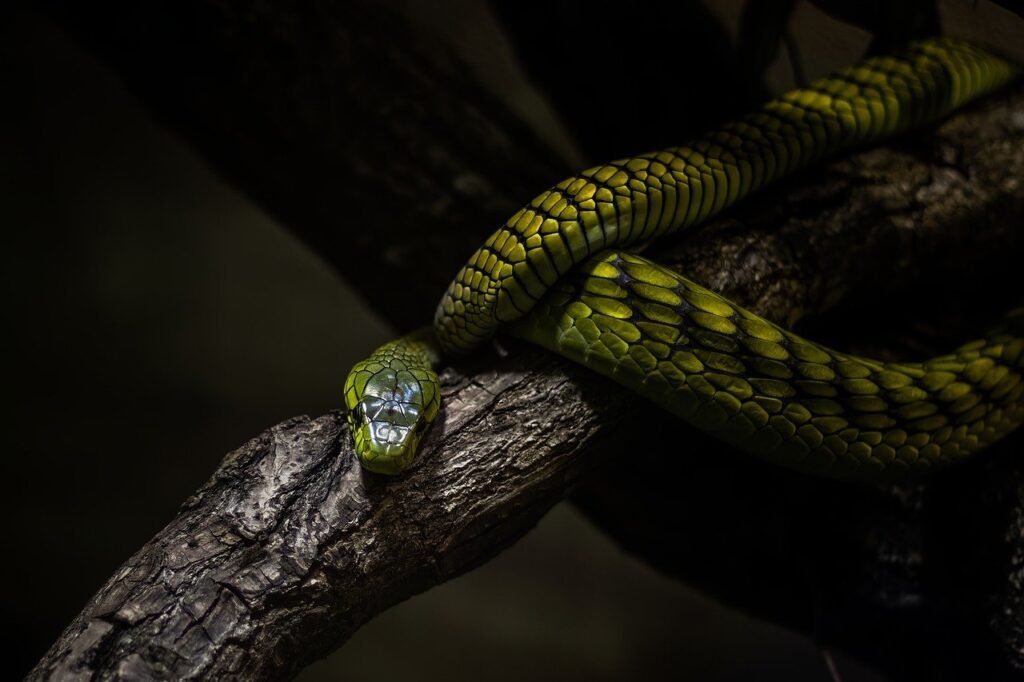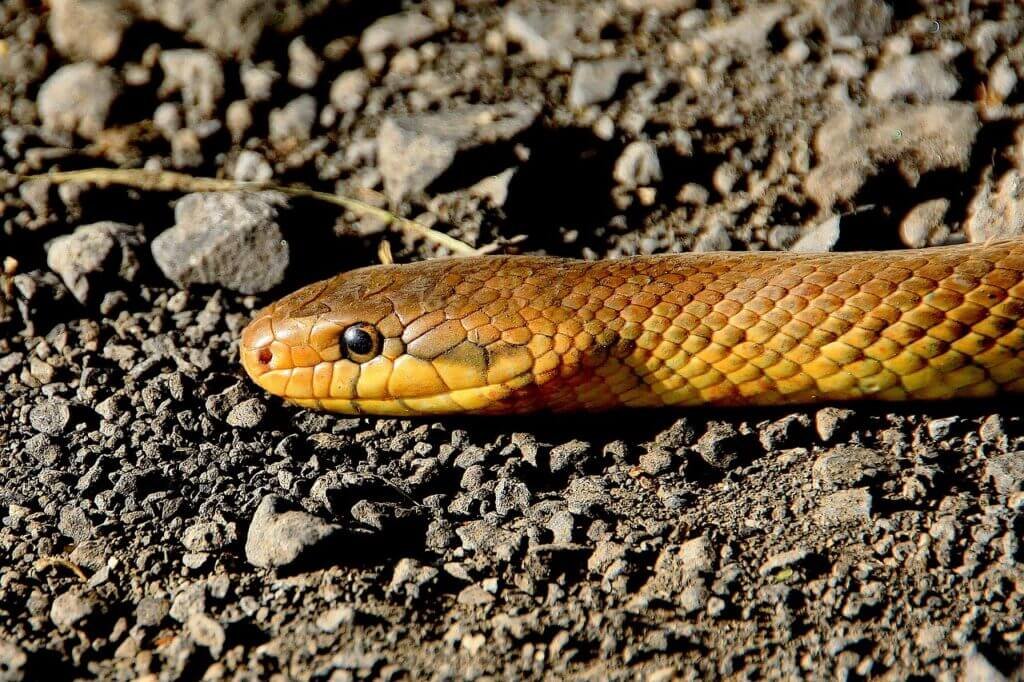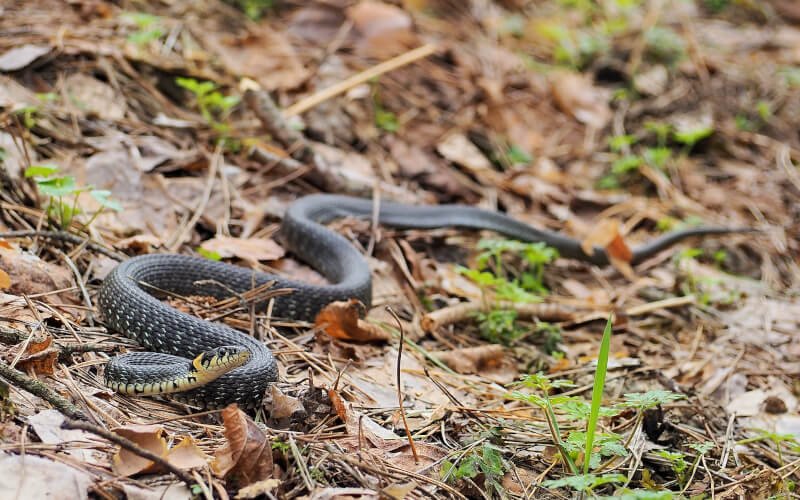Imagine you’re taking a leisurely hike in the great outdoors, enjoying the chirping of birds and the gentle rustling of leaves. Suddenly, out of the corner of your eye, you spot a slithering creature on the ground – a snake! Your heart races, and you freeze, unsure of what to do next. Don’t worry, you’re not alone in this situation. Encountering a snake in the wild can be an unnerving experience for anyone, but fear not! In this article, we’ll provide you with some valuable tips and guidance on what to do if you find yourself face-to-face with these fascinating reptiles. Stay calm and let’s unravel the mysteries of snake encounters together!

Stay Calm
Encountering a snake in the wild can be a startling experience, but it’s important to stay calm. Panic or sudden movements may startle the snake and increase the risk of it becoming aggressive. Take a deep breath and remind yourself that snakes generally want to avoid humans as much as we want to avoid them. By staying calm, you can better assess the situation and make appropriate decisions.
Assess the Situation
Before taking any action, it’s crucial to assess the situation. Take a moment to carefully observe the snake from a safe distance. Evaluate the snake’s behavior and body language to determine if it appears to be agitated or defensive. Do not approach or provoke the snake in any way. Understanding the snake’s disposition will help you make informed decisions.
Control Your Fear
Fear is a natural reaction when encountering a snake, but it’s important to keep it in check. While fear can trigger the fight-or-flight response, it’s essential to remain calm and avoid any sudden movements. Snakes are more likely to strike when they feel threatened, and heightened fear can exacerbate the situation. Take deep breaths, stay composed, and focus on following the necessary steps to ensure your safety.
Maintain Distance
Maintaining distance is crucial when dealing with snakes. By keeping a safe distance, you minimize the risk of a potential bite or confrontation. Remember, snakes have a striking distance that varies depending on the species, so keeping out of their range is essential for your safety.
Keep a Safe Distance
When observing a snake, ensure that you are at least twice its striking distance away. This distance varies with different snake species, so educate yourself about the specific snakes in your area. By maintaining a safe distance, you reduce the chances of a snake feeling threatened and becoming aggressive.
Do not Approach or Provoke the Snake
It should go without saying, but it’s worth emphasizing: never approach or provoke a snake. Snakes generally only bite in self-defense, so if left undisturbed, they are unlikely to pose a threat. Attempting to touch or provoke the snake will increase the chances of being bitten. Keep in mind that snakes are quick and can strike with surprising speed, so it’s important to respect their space and avoid any unnecessary risks.
Identify the Snake
Identifying the snake you encounter is important for your safety and the safety of others. While it’s not always possible to identify the snake in the moment, observing its characteristics and using identification resources later can help determine if it is venomous or non-venomous.
Observe the Snake’s Characteristics
From a safe distance, take note of the snake’s characteristics. Observe its size, color, pattern, and shape. While these characteristics alone may not provide a definitive identification, they can be useful when combined with other information. Remember, never get too close or risk your safety for a more detailed observation.
Use Identification Resources
After ensuring your safety, use identification resources to determine the specific species of snake you have encountered. There are numerous field guides, online resources, and apps available that can help with snake identification. If you are uncertain about the snake’s identity or it displays concerning behavior, consider contacting local wildlife or reptile experts for assistance.
Leave the Snake Alone
One of the best courses of action when encountering a snake in the wild is to simply leave it alone. By avoiding any disturbance or attempt to handle the snake, you minimize the chances of a harmful encounter.
Avoid Disturbing or Handling the Snake
It’s important to understand that disturbing or handling a snake can be dangerous, even if it appears docile or non-venomous. Snakes may defend themselves if they feel threatened, which can result in a bite. Additionally, mishandling a snake can lead to stress or harm to the snake itself. Therefore, it is best to admire snakes from a distance and not disturb their natural behavior.
Give the Snake Space to Retreat
After observing the snake from a safe distance, it’s crucial to give it the space it needs to retreat. Avoid blocking the snake’s escape route and create a clear path for it to move away without feeling cornered. By allowing the snake to retreat, you minimize the risk of it feeling threatened and potentially behaving aggressively.

Slowly Retreat
Once you have observed the snake and given it space, it’s time to slowly retreat from the area. By doing so in a calm and controlled manner, you reduce the chances of startling or provoking the snake.
Back Away Smoothly
When retreating, back away from the snake smoothly and without making any sudden movements. This slow and deliberate approach minimizes the risk of startling the snake and prevents triggering any defensive response. Maintain a steady pace and continue facing the snake, ensuring that you are aware of its movements.
Avoid Sudden Movements
Snakes are highly attuned to movement, and sudden or jerky motions can trigger their predatory instinct. To avoid any unnecessary risks, it’s important to avoid sudden movements. Keeping your actions deliberate and controlled will help maintain a calm environment and decrease the likelihood of the snake perceiving you as a threat.
Do Not Run
Running may be your natural instinct when encountering a snake, but it can actually increase the risk of a chase response from the snake. Moving quickly triggers a snake’s prey drive, potentially leading it to pursue you. Therefore, it is crucial to resist the urge to run.
Running Can Trigger Chase Response
Snakes have evolved to be excellent hunters, and their instinctive response to prey is often to give chase. Running may trigger this response, putting you at a higher risk of being bitten. It’s important to remember that snakes are typically more interested in escaping than attacking, so panicking and running can escalate the situation.
Calmly and Slowly Walk Away
Instead of running, calmly and slowly walk away from the snake. Maintain a steady pace and be mindful of your surroundings. By remaining calm and composed, you can decrease the chances of the snake perceiving you as a threat and avoid any unnecessary confrontation.

Watch Its Movements
As you retreat from the area, it’s important to keep an eye on the snake’s movements. Note its behavior and direction to help others who may encounter it and for your own safety in case you need to provide information to medical professionals.
Keep an Eye on the Snake
Even as you move away from the snake, it’s important to maintain awareness of its movements. Ensure that you do not inadvertently approach it again and take note of any changes in its behavior or direction. This information can be helpful for others who may come across the snake and need to take precautions.
Note Its Behavior and Direction
While retreating, observe the snake’s behavior closely. Is it slithering away, remaining still, or showing signs of aggression? Also, make a mental note of the direction it is moving in. This information can be vital for professionals who may need to handle the situation or for medical personnel if you or someone else has been bitten.
Inform Others
When encountering a snake in the wild, it’s important to warn nearby individuals and advise them to stay away. Sharing information can prevent unnecessary encounters and keep everyone safe.
Warn Nearby Individuals
If you spot a snake in proximity to others, calmly and clearly alert them to the presence of the snake. Use neutral tones and avoid panicking or exaggerating the situation. Informing others about the snake’s location allows them to take appropriate precautions and avoid any dangerous encounters.
Advise Others to Stay Away
In addition to warning others about the snake, it’s crucial to advise them to stay away. Emphasize the importance of maintaining a safe distance and avoiding any attempt to approach or provoke the snake. By providing clear and concise instructions, you can help prevent unnecessary risks and ensure the safety of those around you.
Seek Medical Attention
If, despite your best efforts, you or someone else has been bitten by a snake, it is essential to seek immediate medical attention. Time is of the essence when dealing with snakebites, and prompt medical care can make a significant difference.
If Bitten, Call for Help
In the event of a snakebite, call for emergency assistance or local medical services immediately. Provide them with accurate information about the situation, including the type of snake if known, to ensure appropriate medical response. Stay on the line and follow any instructions given by the emergency services until help arrives.
Stay Calm and Immobilize the Affected Area
While waiting for medical assistance, it’s important to stay calm and immobilize the affected area to slow the spread of venom. Keep the bitten limb as still as possible and, if available, use a splint or other immobilizing device to limit movement. This can help prevent the venom from spreading throughout the body and reduce the severity of symptoms.
Prevent Future Encounters
To minimize the chances of encountering a snake in the wild, it’s important to understand their habitats and take necessary precautions, especially during outdoor activities like hiking or camping.
Learn About Snake Habitats
Educating yourself about the habitats snakes typically inhabit can help you avoid encounters. Research the local snake species in your area and learn about their preferred environments. By understanding where snakes are more likely to be found, you can take extra precautions or choose alternative routes to reduce the risk of unwanted interactions.
Take Precautions while Hiking or Camping
When engaging in outdoor activities like hiking or camping, it’s essential to take precautions to prevent snake encounters. Wear appropriate footwear that covers your ankles and lower legs, as this can offer some degree of protection in case of a snakebite. Stay on designated trails and avoid walking through tall grass or dense vegetation where snakes may hide. Additionally, make noise while walking to alert snakes of your presence and give them an opportunity to retreat.


